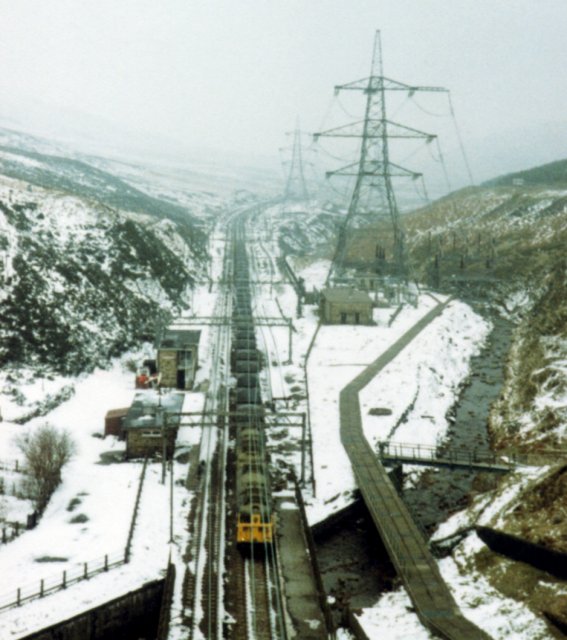
David Shaw, committee member of the Woodhead Campaign, explains his personal connection to the campaign...
I still clearly remember my first visit to Woodhead. It was on my 19th birthday in June '84 and I'd persuaded a good friend, whose caravan I was sharing at Hope, to drive me over to Glossop and out along the Woodhead Road into what, for me, was an unknown part of the Peak District National Park.
The countryside seemed to become more bleak with each turn in the road and when we reached the 'Devil's Elbow' we really wondered what we had let ourselves in for. This was a trip I'd been wanting to make for a number of years, ever since learning of the existance of the Woodhead route - Britain's First All-Electric Mainline - and it's sad demise in July 1981. To me the closure appeared to represent the final step in the relentless destruction of the former Great Central Mainline between Manchester London Road (now Piccadilly) and London Marylebone by the London Midland region of BR. The culmination of a policy towards the former Great Central lines which had also resulted in the closure of Nottingham's centrally located Victoria Station in September 1967 - a grand station still missed by many.
Of course I was very nearly proved wrong on this point when in January 1986 BR issued a proposal to close Marylebone and divert services into Paddington or Baker Street. Happily the fortunes of the GC mainline out of Marylebone were transformed due to the protests of well-heeled commuters in The Chilterns and the Home Counties and growth in Britain's ecomony, which meant traffic into London was no longer shrinking, but growing! This made the closure of Marylebone untenable as there was not sufficient capacity on other lines to absorb the anticipated growth.
In my own growing up I had come to appreciate walking in the southern area of the Peak District National Park with its easy access to Edale, via the Hope Valley Line and Matlock and Buxton via the branches, however the moors of Bleaklow and Saddleworth, along with the Woodhead pass were foreign parts to me.
As we continued our journey that day along the Woodhead Road we soon passed The Old House, at that time a fairly expensive restaurant with views across Rhodeswood and Valehouse reservoirs. Here we were later to enjoy drinks and a meal. Soon after this we had our first encounter with the line and I immediately recognised the location as Torside Crossing, from the many pictures I had seen in books. The barriers had already been removed, presumably for re-use elsewhere on BR, but the single track was still in place continuously in both directions. I'm not sure my mate knew where I was taking him at this point, but I had the map and knew exactly where we were going - we joined the A628 and headed for Woodhead Station!
I'm not sure what I expected to find at Woodhead that day. What I couldn't have anticipated was the impact that seeing the remains of this mainline had on me. Here was a virtually brand new railway tunnel lying dormant, built at the cost of £4.3m, not to mention the lives of six men. Looking the other way down the valley I could see the lines of relatively new continuous welded rail stretching towards Hadfield and Manchester. Conversely most of the Hope Valley line still comprised of old jointed track at this time!
In addition, I'd already read media speculation that the costs of converting the DC equipment over Woodhead had been inflated to improve the business case for closing the line and this seemed to be bore out by the work that had recently taken place to upgrade the remaining Hadfield and Glossop lines to AC current. The scene at Woodhead that day forcefully reminded me of everything that I saw as being wrong with British transport planning, the waste of good resources, the lack of robust contingency planning, the short-sightedness of disposing of transport corridors (rather than mothballing for future use) and the lack of community engagement.
For myself, I determined that day to make a difference and play my part in fighting future closures and promoting rail re-openings. In January 1985 I joined the campaign to fight the closure of the Settle to Carlisle railway line by BR and what a fight that would prove to be! But that's another story...
Subscribe!
Join our Re-open the Woodhead Line for just £10 a year (£5 concessions) to support our work and have a say in how our group works.
Subscribe here!
We need your support.
Subscribe here!
We need your support.
Sunday, 13 February 2011
Woodhead - A Life Changing Encounter
Subscribe to:
Post Comments (Atom)




0 comments:
Post a Comment